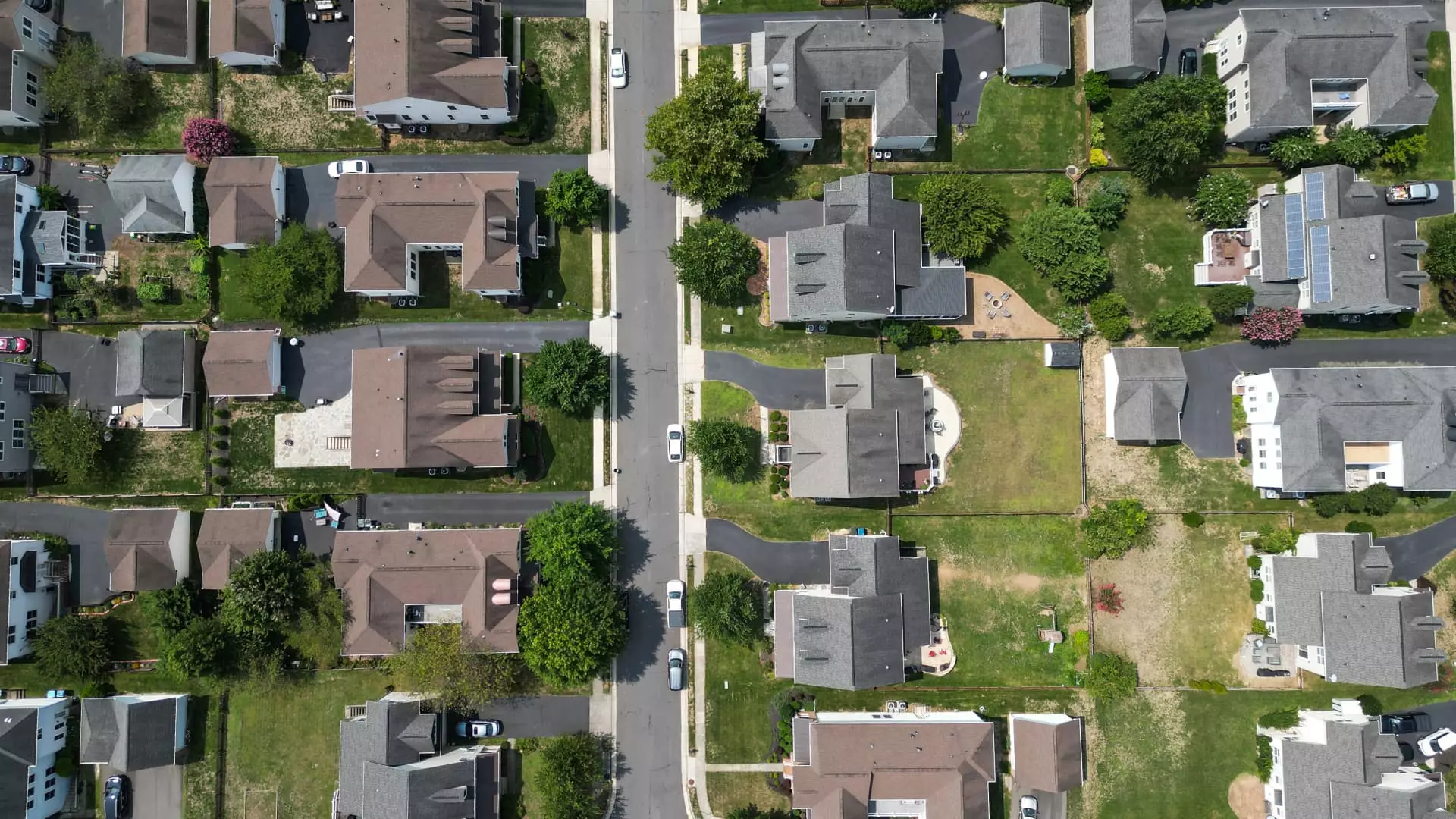In an unsettling turn of events, mortgage rates have surged to their highest levels in over a month, clocking in at an alarming 6.85% for the 30-year fixed rate. This represents a 22-basis point spike within mere days, effectively erasing any respite that homebuyers felt just last week when rates dipped modestly. Such volatility is not simply a culmination of market dynamics; rather, it serves as a stark reminder of the precariousness of our economic landscape, influenced immensely by political decisions and overarching governmental strategies.
Much like an unpredictable roller coaster, the bond and mortgage markets have mirrored the tumultuous swings of the broader economy. Investors, particularly in the face of President Trump’s recent tariff announcements, exhibited panic—a response typical of a market reacting to sudden shifts. As the stock market took a dive, the bond market presented itself as a refuge, momentarily driving yields down. This erratic behavior highlights an unsettling truth: mortgage rates are not just numbers; they are reflections of investor sentiment and economic health.
The Psychological Component of Market Movements
Matthew Graham from Mortgage News Daily encapsulated this phenomenon well when he remarked that last week’s drop was akin to a “knee-jerk reaction.” The markets often overreact, and this instance was no exception. When Treasury Secretary Scott Bessent referred to tariffs as a “melting ice cube,” market sentiments shifted yet again. This illustrates the extent to which investor psychology can sway markets, creating a cycle of fear and relief that ultimately impacts everyday consumers.
As it stands, economic concerns remain palpable, dampening enthusiasm in the housing market. Despite the allure of declining rates, potential buyers are facing rising home prices and a declining sense of security regarding their employment status. It begs the question: how can we expect the housing market to rebound when buyers are feeling this kind of financial strain?
The Challenges in the Housing Market
For those watching the housing sector, the current situation is both complex and worrisome. The spring housing season has begun, with more sellers entering the market and slightly increased inventory. Yet, there’s an unmistakable sluggishness in buyer activity, as evidenced by only a modest 2% rise in pending home sales for February. Alarmingly, sales remain down 3.6% compared to the same period last year, signaling that even slight improvements are falling short of the mark.
Lawrence Yun, chief economist at the National Association of Realtors, noted that contract signings are “well below normal historical levels.” This sentiment should resonate with all of us, as it brings to light not just the struggles of buyers but an entire market landscape teetering on the edge. The increasing home prices, coupled with erratic mortgage rates, create a perfect storm of conditions that dishearten potential first-time buyers and even those looking to trade up.
The Necessity for Legislative Intervention
While the markets may stabilize momentarily as they digest upcoming economic reports, the fact remains: we are in desperate need of sound, thoughtful economic policies. The relationship between interest rates, home prices, and consumer confidence is intricate; decisions made by our leaders have immediate and far-reaching consequences. If legislative action does not prioritize affordable home ownership and stabilize mortgage rates, we risk perpetuating a cycle of insecurity.
Affordability must be at the forefront of any future initiatives. As it stands, potential buyers are grappling with the ramifications of high-interest rates while still trying to save for down payments—all while their current wages seem to be stagnating against these rising costs. Initiatives aimed at easing the burden of high prices and providing more robust financing options are crucial if we want to see a revival in both buyer confidence and market stability.
The volatility in mortgage rates is a glaring symptom of broader economic unrest. We must recognize that the challenges facing today’s potential homeowners are not merely economic statistics—they represent real lives filled with aspirations and the pursuit of stability. Resilience in the housing market will require more than just fluctuations in interest rates; it will necessitate thoughtful policies that protect and empower consumers.

Leave a Reply